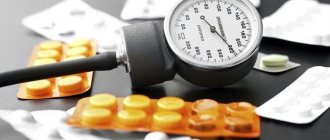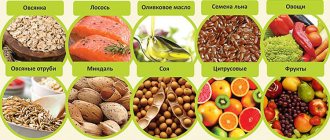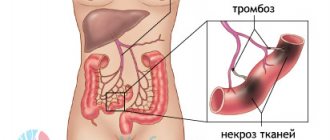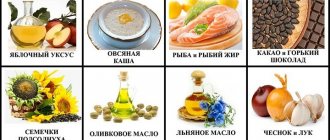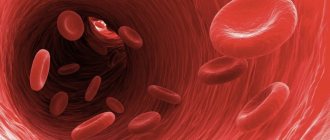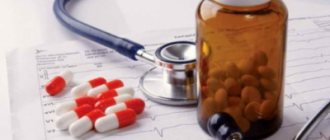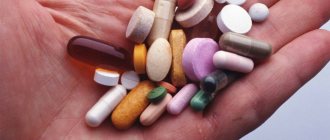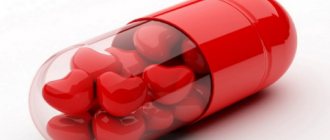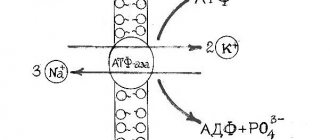The formation of blood clots is an important protective reaction of the human body against blood loss when the integrity of the wall of a blood vessel is violated. But when the thrombotic process becomes excessive, blood clots form that interfere with normal blood flow, then pathological thrombosis occurs.
Modern drugs for resolving blood clots are able to destroy formed clots and prevent the occurrence of new formations. The main thing is to start treatment in a timely manner, since thrombolytic drugs are effective only at the early stage of the disease.
Principles of therapy
There are many reasons for the occurrence of thrombosis: improper functioning of the circulatory system, changes in blood parameters and disruption of its movement, or atherosclerotic problems. However, therapy for blood clots does not depend on the causes of their occurrence, so the treatment regimen is similar in all cases.
The occurrence of a blood clot
Medicines aimed at eliminating blood clots perform certain functions:
- dissolution of formed clots;
- normalization of blood flow;
- impact on blood clotting, in particular - suppression of platelet activity, reduction in the ability of red blood cells to stick together, inhibition of the process of thrombus formation.
Thrombosis therapy is carried out comprehensively using tablets, external agents and injections. Radical treatment methods are used only in emergency situations, when there is a threat of blockage of a blood vessel.
Lyoton gel
A modern remedy with antithrombosis, analgesic, anti-inflammatory effects. Scope of application:
- Varicose veins of the lower extremities.
- Post-injection and post-infusion infiltrates.
- Thrombophlebitis of the blood vessels of the legs.
- Postoperative therapy to prevent blood clots.
The product does not contain restrictions on use and is permitted during pregnancy and breastfeeding.
The price of the tube will be 290 rubles.
Classification of drugs
When the risk of blood clots increases, it is quite natural for patients to ask: how to resolve a blood clot? Antithrombotic agents are classified as follows:
- drugs that dissolve blood clots called thrombolytics;
- medications that prevent the formation of blood clots.
The first group of medications resolves already formed blood clots. Therapy with such drugs is carried out under the supervision of the attending physician, since they belong to the group of potent drugs. They are used in life-threatening conditions, that is, blockage of the lumen of a blood vessel of vital organs.
The second group includes drugs aimed at preventing blood clots. There are two types of medications in this direction: anticoagulants and antiplatelet agents. The former are used to restore normal blood clotting. They inhibit the activity of the enzyme thrombin. Anticoagulants are divided into the following categories:
- heparins;
- hirudins;
- low molecular weight heparins;
- heparinoids.
Therapy with medications of the heparin group received a special name - heparin therapy. The doctor develops treatment tactics with these drugs.
Balsamic liniment
Vishnevsky ointment for thrombophlebitis is one of the most effective remedies at an affordable price. This ointment has a complex effect in the form of blood thinning, resorption of blood clots, and relief of the inflammatory process. In addition, the product has an antibacterial effect.
The composition of the medicine includes:
- Birch tar, thanks to which the intensity and continuity of blood flow is restored.
- Antiseptic component in the form of xeroform powder.
- Castor oil, accelerating the absorption and therapeutic effect of active ingredients.
Vishnevsky ointment for thrombophlebitis of the lower extremities is used in the form of compresses: the required amount of the product is applied to several layers of gauze, the dosage is selected based on the extent of the lesion. The bandage is tightly fixed on the leg and left for at least 5-6 hours, and preferably overnight.
For a pronounced antibacterial effect, doctors recommend alternate use of compresses based on Balsamic Liniment and ointments with antimicrobial, anti-inflammatory effects: zinc, ichthyol. Be careful, read the contraindications!
This procedure accelerates regeneration processes and tissue trophism; as a result, the patient’s recovery with thrombophlebitis is noticeably faster.
This ointment for thrombophlebitis is approved for use by pregnant and lactating women; the list of contraindications includes only a predisposition to an allergy to the components.
The price is low, about 65 rubles.
Characteristics of thrombolytic agents
Thrombolytics are medications that dissolve blood clots in blood vessels. They are used in cases of a serious threat of complications, namely thromboembolism of the great vessels of important organs. Such treatment has maximum effect in the first 24 hours from the moment of thrombosis.
Fibrinolysis and administration of these medications is carried out in a hospital setting under the strict supervision of a specialist. This is due to the fact that procedures using various thrombolytic drugs are associated with a high risk of severe bleeding.
There are a number of contraindications that limit the use of drugs for resolving blood clots:
- surgery on the brain or spinal cord 2 months before the formation of a blood clot in a vein;
- stroke;
- internal organ injuries;
- hypertension;
- high blood pressure;
- all kinds of bleeding over the past 2 weeks;
- low platelet concentration.
Effective representatives of this group of medications are:
- "Streptokinase" is a drug of natural origin obtained from hemolytic streptococcus. Its repeated intravenous administration can lead to the development of anaphylactic shock to a foreign protein in the patient.
- "Purolaza" is the most effective and perfect slow-acting medicine. It directly affects the formed blood clot.
- "Alteplase" belongs to the category of drugs synthesized artificially by introducing the necessary genes into E. coli. The drug affects only the area affected by the blood clot.
Among the thrombolytics there is such a tablet drug as nicotinic acid. This medicine acts not only by destroying blood clots, but also helps to get rid of the resulting blood clots due to its vasodilating capabilities. Such medications are activators of hematopoiesis in the bone marrow.
Streptokinase
Side effects
The most common side effects after taking drugs in the form of injections and tablets for blood clots in the vessels of the legs include:
- Allergic reactions of various types;
- Digestive disorders (pain, nausea, stool disorders);
- Dizziness, weakness, tinnitus;
- Thrombocytopenia, bleeding;
- Impaired kidney and liver function.
If any of these symptoms occur, you should stop treatment and seek medical help.
Prevention and treatment of thrombosis at an early stage are based on the use of anticoagulants that prevent the formation of fibrin blood clots. To eliminate existing formations (blood clots), thrombolytics are prescribed in combination with anticoagulants and other drugs to normalize general and local blood flow.
Features of the use of anticoagulants
It was already mentioned above that the group of anticoagulants includes medications that prevent the formation of clots and increase blood clotting. They are widely used for therapy and as preventive measures for thrombosis. Anticoagulants are divided into direct and indirect acting drugs. This division is due to different structure and efficiency.
The group of indirect-acting drugs includes drugs that affect the formation of prothrombin in the liver. They restore the optimal composition of the blood. "Warfarin" is a drug of indirect influence that suppresses the synthesis of anticoagulant substances.
Warfarin tablets are indicated for acute deep vein thrombosis, blockage of blood vessels after surgery, embolism. Used as prophylaxis after heart attacks. The drug is taken strictly according to the regimen prescribed by the treating specialist.
The main contraindications for their use:
- danger of bleeding;
- peptic ulcer;
- pregnancy;
- recent major operations.
Medicines that destroy blood clots with direct influence are used in cases of a threat of thromboembolism. This is often indicated by blood indicators after blood analysis. These drugs destroy blood clots, thereby eliminating the danger. Direct anticoagulants include Heparin. Contraindications for the use of the considered drugs:
- blood clotting disorder;
- malignant neoplasms;
- internal hemorrhage;
- bleeding;
- recent surgery.
Most patients are interested in: how long does it take for a blood clot to dissolve? The period of destruction of blood clots is individual for each patient, and depends on the duration of thrombosis, the characteristics of the body and the diameter of the blocked vessel.
Treatment of thrombosis with traditional methods
Now let's look at how to dissolve a deep vein thrombus at home. Using unconventional healing methods, thrombosis can be treated at any stage. But in especially severe cases, natural recipes are indicated only as an auxiliary therapy. The following traditional medicines have proven themselves to be excellent:
- Taking a decoction of dried leaves and flowers of Verbena officinalis helps dissolve blood clots and prevent their formation. A tablespoon of dry raw material is poured into two glasses of boiling water and brought to a boil. After this, the anti-thrombosis drug is allowed to brew for about 60 minutes. You should take a decoction of medicinal verbena at least three times a day, 20–30 minutes before meals, and maintain the general course for 2.5–3 months.
- Herbal decoction of hop cones has a beneficial effect on the cardiovascular system due to its rich composition, including phytoncides, essential oils, organic acids, and polyphenols. It is advisable to take the hop infusion in the late afternoon, as it has a sedative effect.
- Honey in combination with onions is a powerful blood clot dissolver and cleanser of the vascular system. Due to natural anticoagulants, onions are healthier than aspirin. The mixture of honey and onion pulp, rich in useful substances, effectively dissolves blood clots, cleanses the blood flow and blood vessels. To prepare the medicine, you need to mix a glass of honey with the same amount of grated onion or juice from it and leave for three days. You need to take a natural medicine for internal vein thrombosis one tablespoon before each meal until the mixture runs out. After which it is advisable to take a week's break and resume taking the anti-thrombosis medication.
- A decoction of white acacia is known for containing salicylic acid, which is excellent at reducing blood viscosity. And tannins and essential oils restore and maintain the elasticity of blood vessels. To make a medicine for internal vein thrombosis, you need to place dried or fresh acacia flowers in a half-liter jar in a 1:5 ratio and fill it with vodka. Let it brew for a week in a place protected from light, after which it can be used. Acacia tincture against thrombosis is used to wipe the affected areas of the body. And take 4-6 drops orally several times a day in courses lasting about a month.
- A healing mixture of garlic and lemon perfectly cleanses blood vessels from blood clots and lipid stains. As a result, dissolved blood clots are quickly removed from the body. Garlic also helps thin the blood, just like lemon. But the citrus fruit also strengthens the walls of blood vessels, giving them tone and making them elastic. The therapeutic composition for deep vein thrombosis is prepared based on one lemon with the peel of a head of garlic. Everything is crushed and the ingredients are poured with pre-boiled and cooled water. Infuse the drug for internal vein thrombosis in a dark place for two to three days. Then take it before meals in concentrated or diluted form with water.
Read also: ICD 10 acute thrombosis of blood vessels of the lower extremities
There are many recipes for the treatment of venous insufficiency due to thrombosis of the internal veins; you just need to select the most appropriate ingredients in each specific case. Don’t forget about physical activity in the fresh air. Moderate physical exercise promotes proper blood circulation and outflow from the lower extremities.
Daily walks in the fresh air will help maintain metabolism at the proper level, which will prevent thickening of the blood substance and disturbances in the metabolism of fats and carbohydrates. Only an integrated approach, including diet, therapeutic exercises for deep vein thrombosis, an energetic lifestyle and the use of natural medicines will quickly give positive results.
Review of the group of antiplatelet agents
Antiplatelet agents help effectively get rid of thrombosis.
These drugs affect the quality characteristics of the blood. Three generations of such drugs are mainly used:
- First generation medications include acetylsalicylic acid (aspirin). It destroys one of the components of the cells responsible for blood clotting.
- The group of second-generation drugs is represented by drugs such as Clopidogrel and Ticlopidine, which have strong antithrombotic properties.
- Third generation drugs include Framon, Choledol, Eptifibatide, and Abciximab.
Sometimes a blood clot that has formed can resolve on its own, however, this happens only in healthy people who eat normally and do not allow the body to dehydrate. Therefore, you should avoid drinking alcohol and fatty foods. You need to be active and devote at least 20 minutes to warming up and simple gymnastics.

